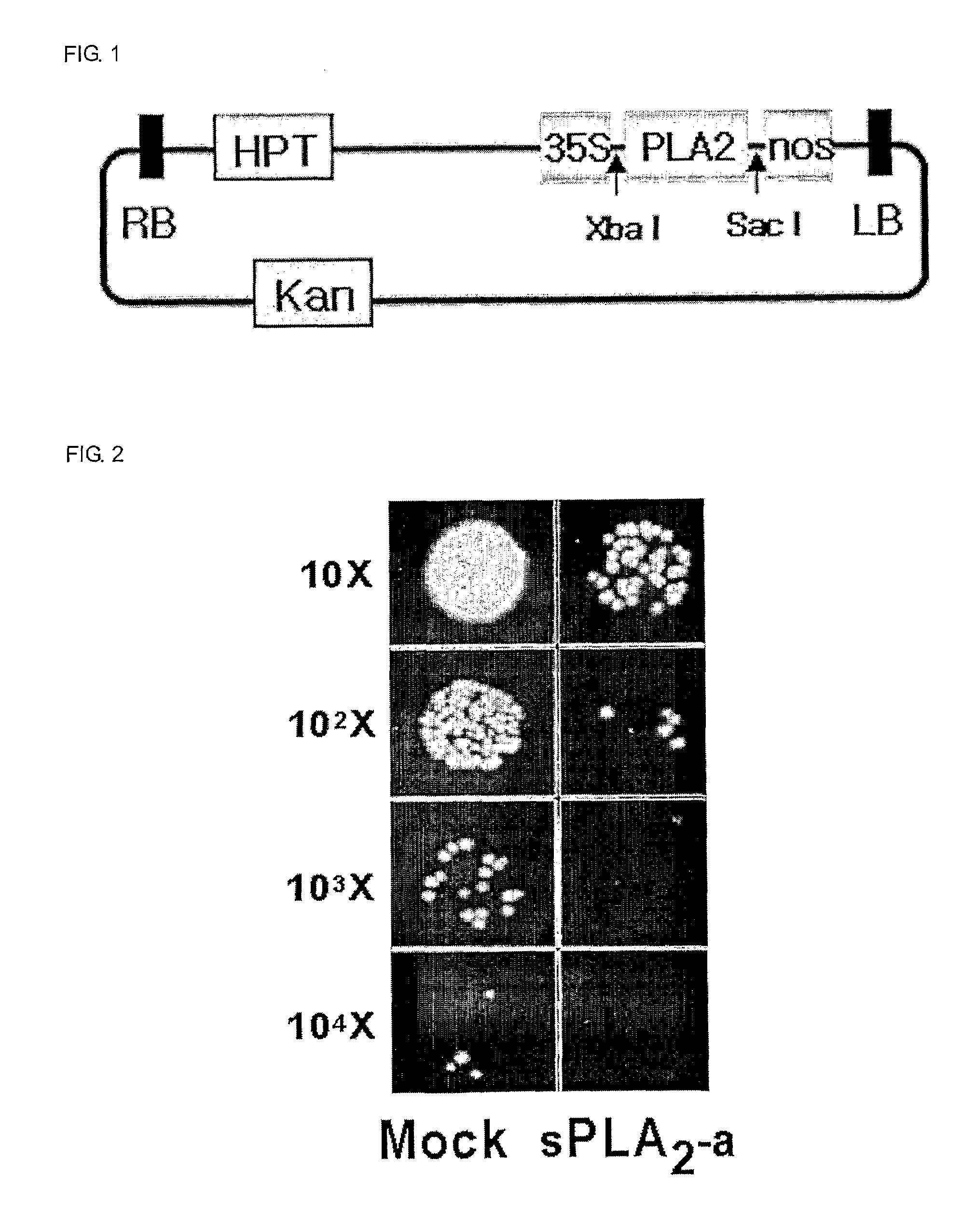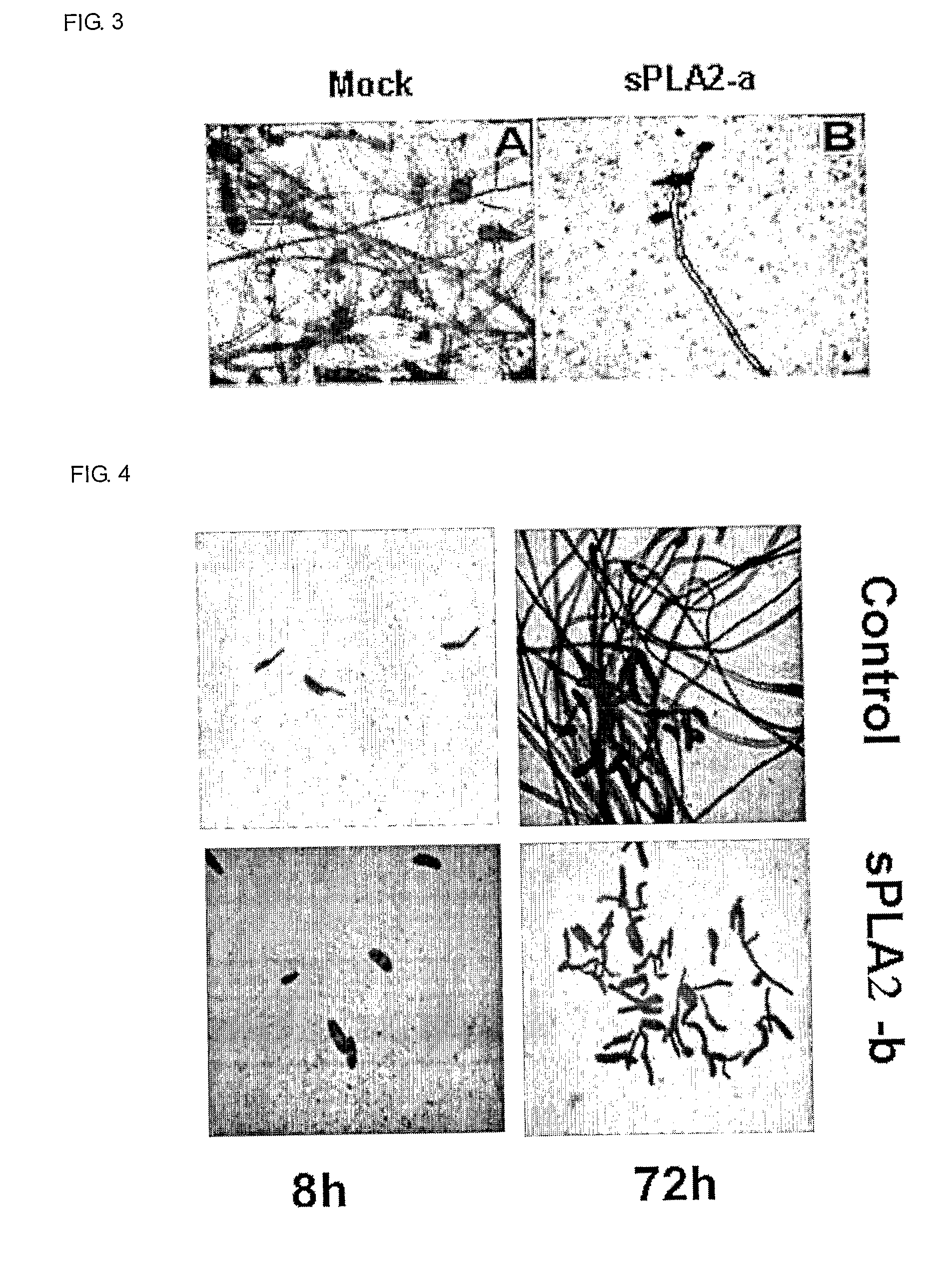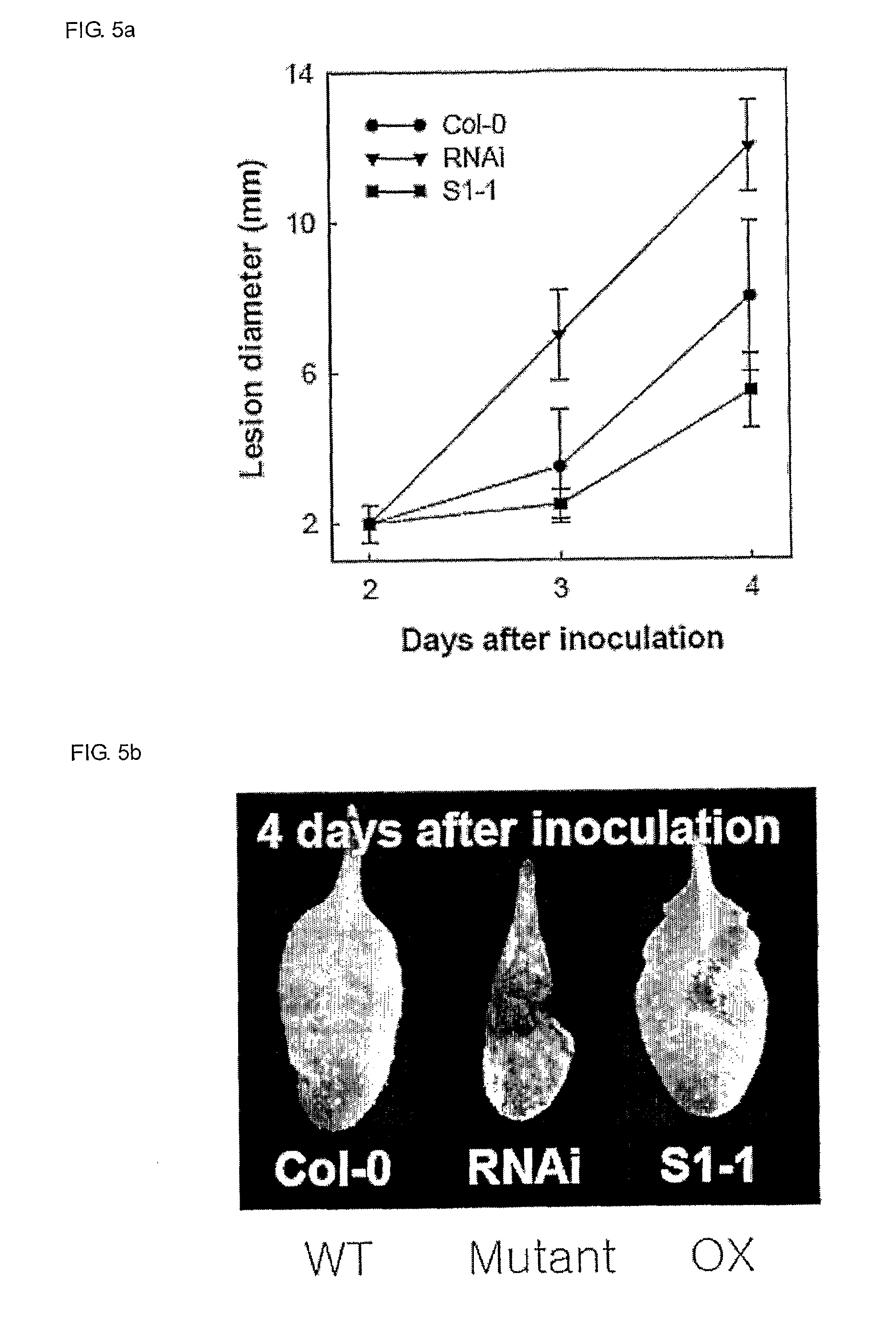Transgenic plants exhibiting increased resistance to biotic and abiotic stresses and methods for producing the same
a technology of abiotic stress and transgenic plants, applied in the field of plants, can solve the problems of abiotic and biotic stress damage to crops, no multifunctional gene that induces enhanced resistance, and significantly prolonging the growing season in regions with colder climates. , to achieve the effect of reducing the damaging effects of abiotic and biotic stress, accelerating flowering, and increasing intracellular lysophospholipid concentration
- Summary
- Abstract
- Description
- Claims
- Application Information
AI Technical Summary
Benefits of technology
Problems solved by technology
Method used
Image
Examples
example 1
Cloning of an sPLA2 cDNA from Arabidopsis
[0101]Using the previously described N-terminal amino acid sequence of an elm PLA2 (Stahl et al., 1998) as a query, we identified a related sequence in the Arabidopsis ecotype Columbia (Col-0) database (AtDB Stanford University). An Arabidopsis thaliana cDNA library constructed in YESTrp2 (Invitrogen, Carlsbad, CA) was obtained from Soo Young Kim (Kumho Life and Environmental Science Laboratory, Gwangju, Korea). Two PLA2-specific oligonucleotides (5′-TCGCACTTCATTGATGCG-3′ (SEQ ID NO: 6) and 5′-TCATAGCTCTGTTTTCATATCATTACCT-3′ (SEQ ID NO: 7)) were used in combination with the T3 and T7 promoter-specific primers to isolate partial PLA2 sequences from a cDNA library. The PCR contained 6 pmol of each primer and 1 unit of ExTaq polymerase (Pan Vera, Madison, WI) and consisted of 35 cycles of 94 C for 30 s, 60 C for 30 s, and 72 C for 1 min. Amplified products were isolated from a 0.8% (w / v) agarose gel and cloned into pGEM-T (Promega) for sequenci...
example 2
Introduction of the sPLA2 cDNA into Arabidopsis Plants for Ectopic Expression of this Protein in Transgenic Tissues
[0102]The applied transformation technology is based on the Agrobacterium gene delivery system reviewed by Hinchee et al. “Plant Cell and Tissue Culture” pp. 231-270, eds. I. K. Vasil T. A Thorpe, Kluwer Academic Publisher 1994. In the present Examples we have used the system with plant transformation vector pBIG-HYG under the control of the CaMV 35S promoter (FIG. 1). The PCR-amplified cDNAs of sPLA2-a (SEQ ID NO:1) and sPLA2-b (SEQ ID NO:3) were cloned into the XbaI and SacI sites of the binary vector pBIG (a derivative of the binary vector pB110, CLONTECH) between the CaMV 35S promoter and the nopaline synthase terminator to construct a recombinant binary vector pBIG-HYG (FIG. 1). The so constructed binary vectors were mobilized into an Agrobacterium strain. The flowers of Arabidopsis (Col-0) were then co-cultured with the Agrobacterium cells and transformants were s...
example 3
Recombinant Proteins of sPLA2 have Anti-microbial Activities Against Bacteria and Fungus
[0103]The free mature form (3 μg) of recombinant PLA2α protein produced in BL21(DE3)PLys cells, as previously described (Lee et al., 2005), was added to virulent Pseudomonase syringae pv tomato (5×105 cfu ml−1) suspended in 100 μl of Tris.HCl (50 mM, pH 8.0) solution containing 10 mM CaCl2 or to fungus (Alternaria brassicicola) suspended in the culture media. The mock control consisted of bacteria suspended in solution without PLA2α. FIG. 2 depicts anti-bacterial activity against Pseudomonase syringae pv tomato of recombinant sPLA2-a protein. Recombinant sPLA2-a protein greatly decreases numbers of virulent bacteria (Pseudomonas syringae) compared to mock controls after 6 h incubation. FIG. 3 depicts anti-fungal activity against Alternaria brassicicola of recombinant sPLA2-a protein. Recombinant sPLA2-a protein greatly inhibited the growth of fungus (Alternaria brassicicola) compared to mock cont...
PUM
| Property | Measurement | Unit |
|---|---|---|
| pH | aaaaa | aaaaa |
| resistance | aaaaa | aaaaa |
| stress | aaaaa | aaaaa |
Abstract
Description
Claims
Application Information
 Login to View More
Login to View More - R&D
- Intellectual Property
- Life Sciences
- Materials
- Tech Scout
- Unparalleled Data Quality
- Higher Quality Content
- 60% Fewer Hallucinations
Browse by: Latest US Patents, China's latest patents, Technical Efficacy Thesaurus, Application Domain, Technology Topic, Popular Technical Reports.
© 2025 PatSnap. All rights reserved.Legal|Privacy policy|Modern Slavery Act Transparency Statement|Sitemap|About US| Contact US: help@patsnap.com



